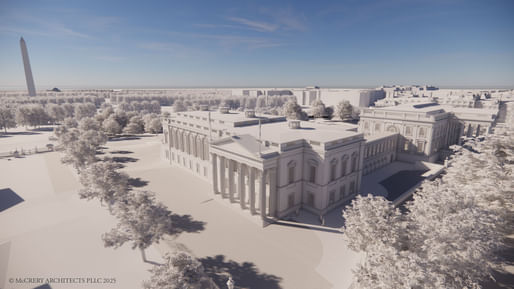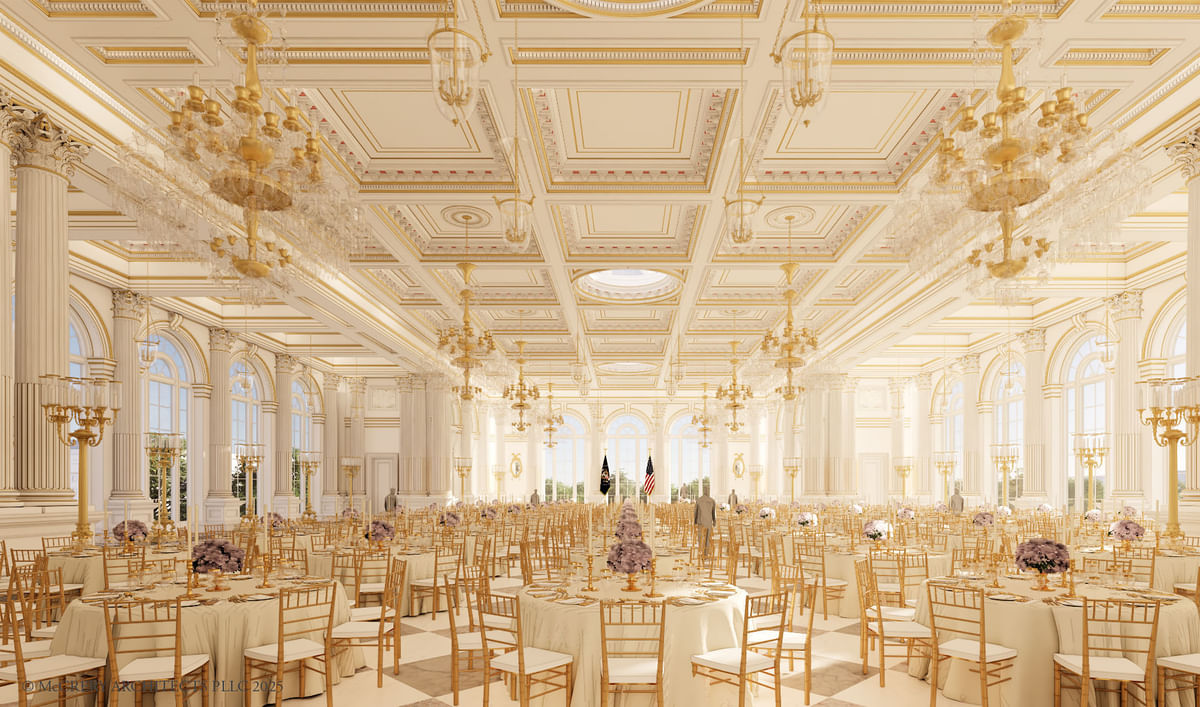As the White House began demolition of the landmark’s East Wing to make way for a $300 million ballroom spearheaded by President Trump earlier this week, major architectural organizations have published open statements and letters on the scheme.
Plans for the 90,000-square-foot ballroom were first floated earlier this summer. While Trump has previously pledged that construction of the scheme would not interfere with the existing building, crews had already completely demolished the East Wing by midday Thursday this week to make way for the project.
Below, we have set out the reaction of leading architectural organizations. You can learn more about the project by following our rolling coverage here.
American Institute of Architects
The American Institute of Architects (AIA) affirms with deep concern that the full demolition of the White House East Wing stands in direct contradiction to earlier public assurances that the project “will be near it, but not touching it and it will pay total respect to the existing building.” This undertaking calls into question not only the integrity of the architecture involved, but the transparency, process and public stewardship that underlie our civic built environment.
As set forth in our August 5, 2025 statement and letter to the Committee for the Preservation of the White House, AIA urged rigorous oversight in recognition that the White House is not simply another building; it is the People’s House, a living symbol of democracy and national identity. We recommended a project governed by the highest standards of design excellence: a qualifications-based selection of the architect, alignment with historic-preservation standards, full transparency in funding and procurement, proportionality of design to the existing complex, and collaboration with expert practitioners to safeguard longevity and public value.
The demolition of the East Wing without full public engagement or clarity undermines the very process that the design and preservation professions developed to protect our civic architecture. Public architecture requires open decision-making, meaningful opportunity for citizen participation, and a design process rooted in stewardship of heritage as well as service to future generations. When these processes are sidestepped, trust is eroded, and the public dimension of architecture is diminished.
The AIA reiterates that architects bring a commitment to how communities are seen, how history is respected, how public investment is honored, and how places reflect the people they serve. The White House — its form, setting, and meaning — deserves that care.
We call on decision-makers to halt any further irreversible alteration of the historic fabric, to publish full documentation of the project’s scope, budget, schedule and procurement path, and to reopen meaningful engagement with the professional community and the public.
Only by returning to a process grounded in transparency, preservation and excellence can the People’s House continue to reflect their values.
Full statement here.
 Exterior rendering of the East Wing Ballroom expansion. Image: McCrery Architects/White HouseNational Trust for Historic Preservation
Exterior rendering of the East Wing Ballroom expansion. Image: McCrery Architects/White HouseNational Trust for Historic Preservation
Our mission is to protect America’s significant historic sites and to advocate for historic preservation as a core public value, and our congressional charter obligates us to facilitate public participation in the preservation of sites, buildings, and objects of national significance or interest.
We acknowledge the utility of a larger meeting space at the White House, but we are deeply concerned that the massing and height of the proposed new construction will overwhelm the White House itself—it is 55,000 square feet—and may also permanently disrupt the carefully balanced classical design of the White House with its two smaller, and lower, East and West Wings.
We respectfully urge the Administration and the National Park Service to pause demolition until plans for the proposed ballroom go through the legally required public review processes, including consultation and review by the National Capital Planning Commission and the Commission of Fine Arts, both of which have authority to review new construction at the White House, and to invite comments from the American people.
Full statement here.
Society of Architectural Historians
The Society of Architectural Historians (SAH) expresses great concern over the proposed ballroom addition to the White House. On July 31, 2025, the White House issued a statement that a 90,000 sq. ft. addition will be made to the White House to incorporate a 650-person capacity ballroom. The project is set to begin in September 2025 and planned to be completed “long before” the end of the President’s term in 2029. Funded privately by the President and other unspecified donors, the approximately $200 million project involves a major expansion of the East Wing of the White House.
[…]
While we recognize that the White House is a building with evolving needs, and that it has undergone various exterior and interior modifications since construction began in 1792, the proposed ballroom will be the first major change to its exterior appearance in the last 83 years (since the East Wing in its current form was built in 1942). Therefore, such a significant change to a historic building of this import should follow a rigorous and deliberate design and review process.
Full statement here.

